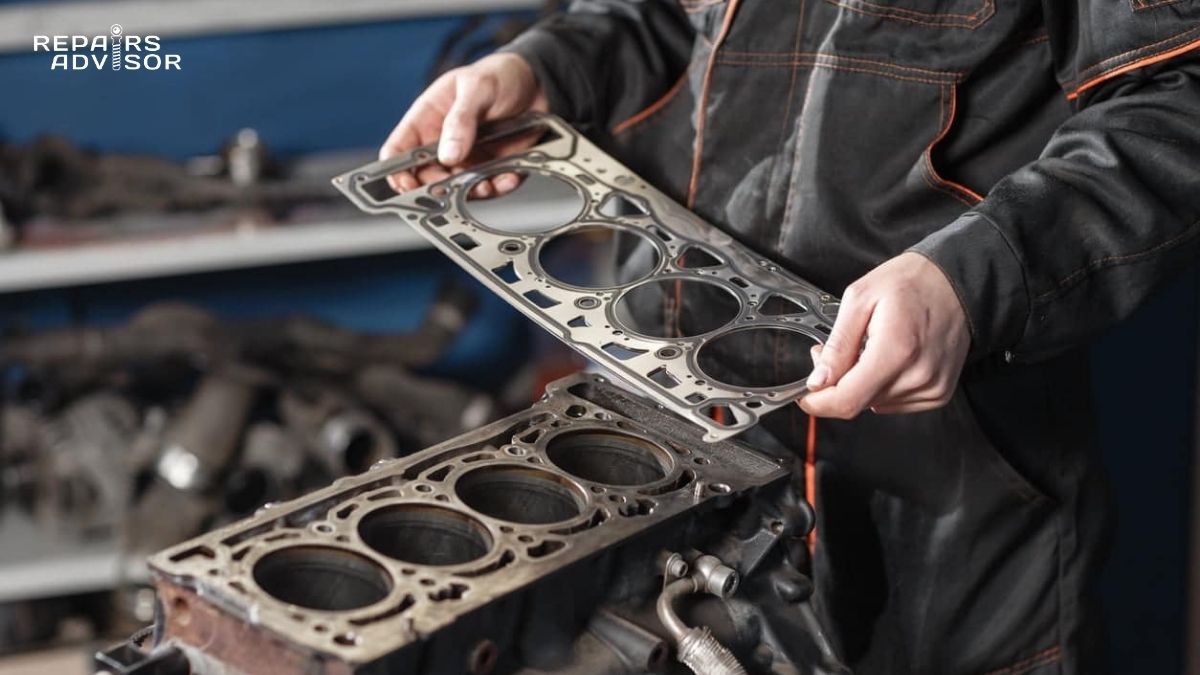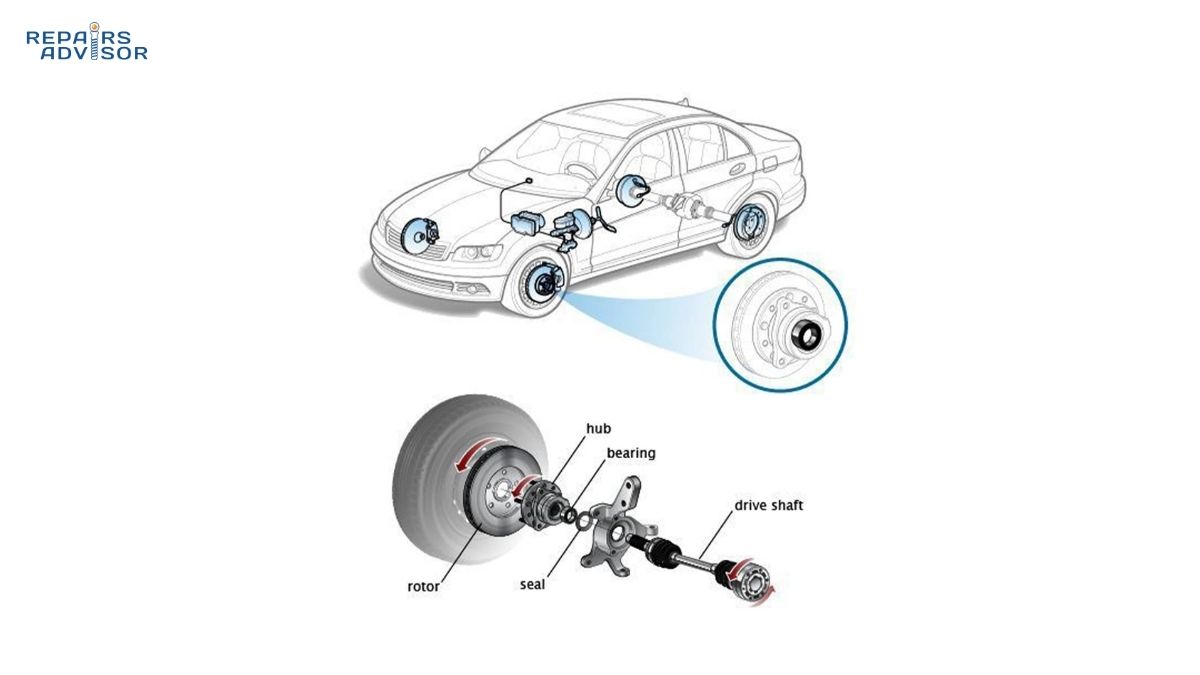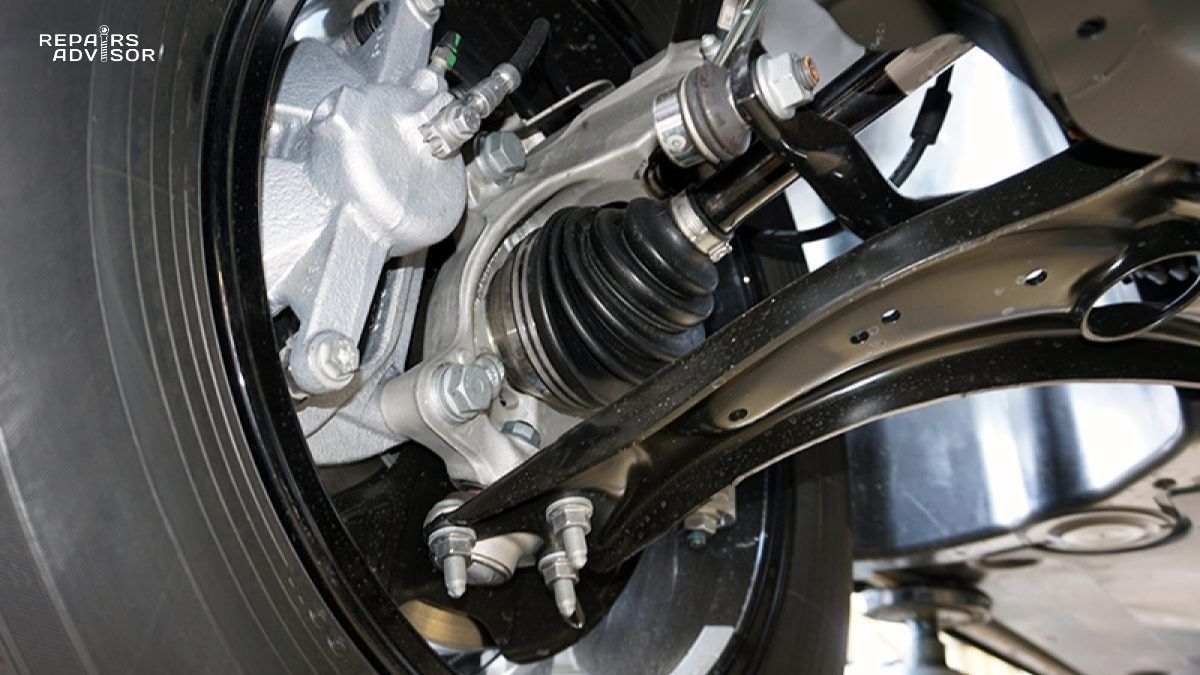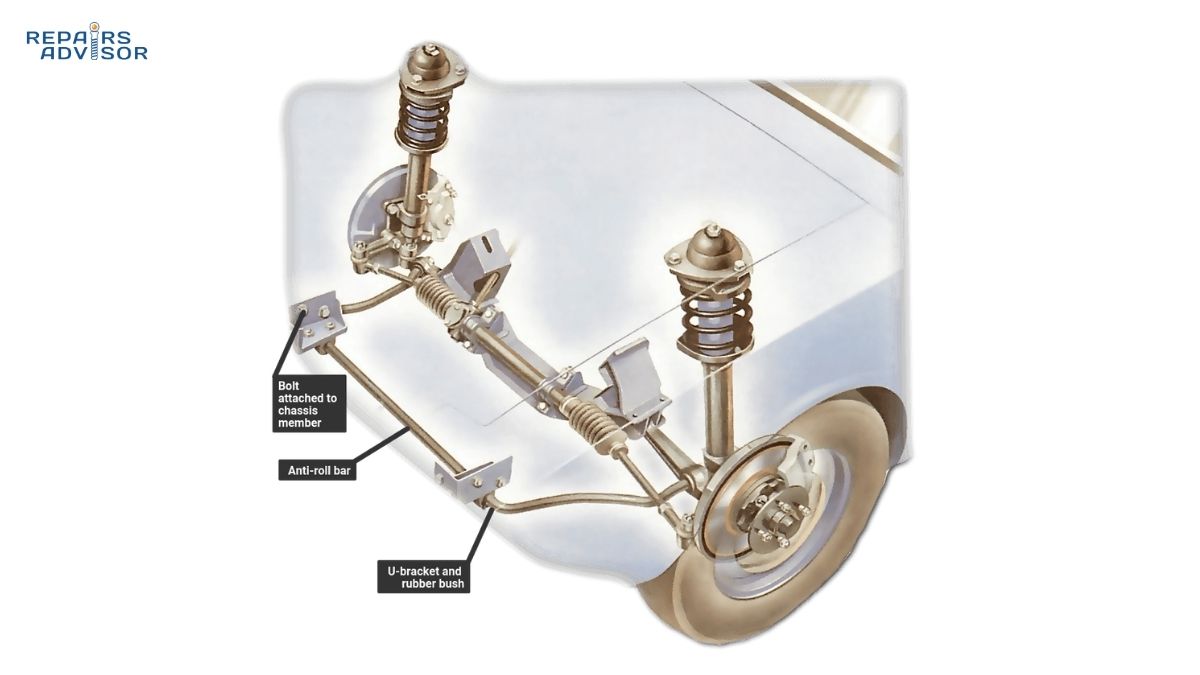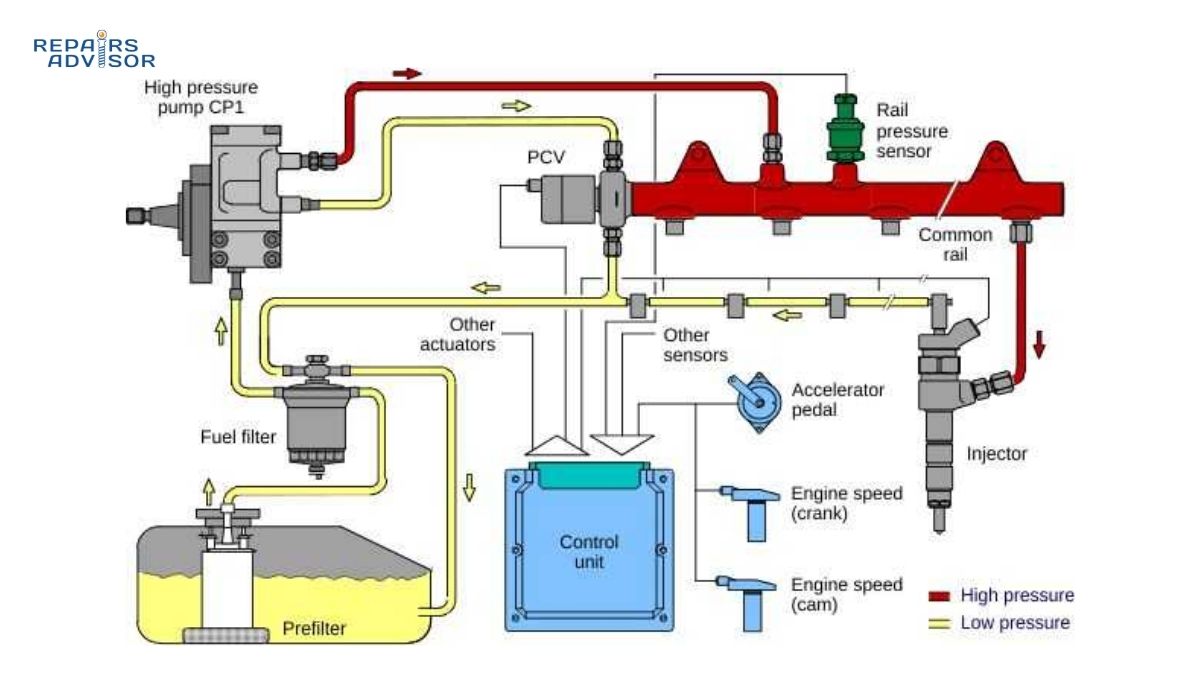The head gasket serves as one of the most critical sealing components in your engine, creating essential barriers between the cylinder head and engine block. This precision-engineered seal manages extreme pressures, temperatures, and fluid flows while maintaining perfect combustion chamber integrity. Understanding how head gaskets work helps you recognize when professional service becomes necessary and appreciate the engineering that keeps your engine running efficiently.
Safety Note: Head gasket diagnosis and replacement requires specialized tools and expertise. This information is provided for educational purposes only. Always consult qualified professionals for head gasket service, as improper installation can result in catastrophic engine damage.
Why Head Gasket Is Critical for Engine Performance
Head gaskets function as the engine’s most demanding sealing application, simultaneously containing combustion pressures exceeding 1,000 PSI while separating coolant and oil circuits. Modern engines generate tremendous thermal and mechanical stresses that would destroy lesser sealing methods, making the head gasket’s multi-layer design essential for reliable operation.
The head gasket creates distinct sealed chambers within your engine. Combustion chambers require perfect sealing to maintain compression ratios and prevent pressure loss during the power stroke. Meanwhile, coolant passages must remain sealed to prevent mixing with oil or combustion gases, while oil galleries need isolation to maintain proper lubrication pressure throughout the engine block and cylinder head assemblies.
Modern head gasket failure affects multiple engine systems simultaneously. Coolant contamination destroys bearing surfaces and creates corrosion throughout the cooling system, while oil contamination reduces cooling efficiency and can cause overheating damage to pistons and cylinder walls. Compression loss reduces power output and fuel economy, while combustion gas leakage pressurizes cooling systems and creates dangerous operating conditions.
Professional head gasket service becomes essential when sealing integrity compromises engine operation. DIY enthusiasts can monitor cooling system condition and recognize early warning signs, but head gasket replacement requires precision machining tools, specialized torque procedures, and comprehensive system knowledge that only qualified technicians possess.
Head Gasket Parts and Construction Explained
Head gasket construction varies significantly between MLS gasket designs used in modern high-performance engines and composite gasket designs found in many older applications. Understanding these construction differences helps explain why modern engines require different service approaches and why replacement gasket selection critically affects long-term reliability.
MLS gaskets (Multi-Layer Steel) represent current industry standard design, featuring multiple steel layers with specialized coatings. The core structure typically includes three to five steel layers, each serving specific sealing functions. Outer layers provide structural strength and dimensional stability, while inner layers create the actual combustion seal through precisely formed sealing beads. Advanced fire rings around combustion chambers handle extreme pressure and temperature cycles, while specialized coatings on sealing surfaces ensure proper adhesion to aluminum and iron surfaces.
Composite gaskets combine steel and elastomer materials in applications requiring different sealing characteristics. Steel core construction provides structural integrity, while graphite or fiber facing materials create conformable sealing surfaces. These designs work well with cast iron components but require different torque specifications and replacement intervals compared to MLS designs.
Sealing beads represent the critical sealing elements in modern head gasket design. These precisely formed steel ridges concentrate clamping force at sealing interfaces, creating gas-tight barriers around combustion chambers while allowing controlled deformation during thermal expansion. Multiple bead designs handle different pressure zones – primary beads seal combustion chambers while secondary beads manage coolant and oil passages.
Coolant passages and oil passages require separate sealing zones within the head gasket structure. Coolant seals must handle thermal expansion while preventing pressure loss, while oil seals manage different fluid characteristics and pressure ranges. Modern gasket designs integrate these sealing functions while maintaining proper fluid separation under all operating conditions.
Quality variations significantly affect head gasket service life and performance. OEM gaskets provide exact specifications and materials for specific engine applications, while performance gaskets may offer enhanced materials for modified engines. Budget alternatives often compromise materials or construction quality, leading to premature failure and repeat service requirements.
How Head Gasket Works: Step-by-Step Operation
Head gasket operation begins during engine assembly when precision torque procedures compress the gasket between the cylinder head and engine block surfaces. Step 1: Initial Compression occurs when head bolts or studs apply specified clamping force, causing sealing beads to deform and create initial sealing contact. This compression must achieve exact specifications – insufficient torque allows leakage while excessive torque crushes sealing elements and creates stress concentrations.
Step 2: Thermal Expansion Management happens as the engine reaches operating temperature and components expand at different rates. Aluminum cylinder heads expand more than cast iron blocks, creating dynamic stress patterns that the head gasket must accommodate. MLS gasket construction allows controlled movement while maintaining sealing integrity, with multiple layers sliding slightly to compensate for thermal growth without losing clamping force at critical sealing points.
Step 3: Dynamic Pressure Sealing occurs during engine operation when combustion pressures create extreme loading on gasket sealing beads. Peak combustion pressures can exceed 1,000 PSI in modern engines, requiring the combustion seal to maintain integrity while surrounding coolant and oil passages experience much lower pressures. Fire rings concentrate sealing force around combustion chambers while allowing gasket flexibility in less critical areas.
The head gasket must simultaneously manage multiple fluid circuits during operation. Coolant circulation requires sealed passages that allow flow between block and head while preventing external leakage or mixing with other fluids. Oil return passages from the cylinder head must remain sealed to prevent oil loss while maintaining proper drain-back flow to the oil pan.
Pressure differential management represents one of the head gasket’s most challenging functions. Combustion chamber pressures dramatically exceed cooling system pressure (typically 15-20 PSI), creating constant stress on sealing elements. Engine oil pressures fall between these extremes, requiring intermediate sealing specifications that maintain separation under varying load conditions.
Real-time integration with engine systems affects head gasket performance throughout operation. Thermostat operation controls cooling system temperatures that directly impact thermal expansion stresses, while oil temperature management affects lubrication circuit pressures. Engine load variations create pressure cycling that tests gasket durability over millions of combustion events.
Head Gasket Location and Access Guide
Head gasket location between the cylinder head and engine block makes it one of the most inaccessible engine components for service. Access Requirements demand complete cylinder head removal, requiring specialized tools and extensive component disassembly. Professional technicians need precision measuring equipment, torque-to-yield bolt specifications, and surface preparation tools that exceed typical DIY capabilities.
Visual Identification of head gasket problems often appears through external symptoms before the gasket becomes directly accessible. White exhaust smoke indicates coolant entering combustion chambers, while milky oil suggests coolant contamination in the lubrication system. Cooling system bubbling or excessive pressure buildup points to combustion gas leakage into coolant passages.
Pre-removal Requirements include complete cooling system drainage, intake manifold removal, exhaust system disconnection, and numerous accessory component removal. Timing system access may require timing chain or belt removal, while valve train components need careful documentation for proper reassembly.
Surface Preparation becomes critical once the old gasket is removed. Both cylinder head and engine block sealing surfaces require precision measurement and potential machining to restore proper flatness specifications. Warpage detection requires specialized straight edges and feeler gauges, while surface finish must meet exact specifications for proper gasket sealing.
Professional Installation Requirements include precise torque sequences, often using torque-to-yield bolts that require replacement during service. Bolt torque specifications follow multi-step procedures with angle measurements that exceed amateur tool capabilities. Timing system alignment must be verified during reassembly to prevent valve-to-piston interference.
⚠️ Critical Safety Warning: Head gasket replacement involves significant safety hazards including heavy component handling, hot surface exposure, and potential toxic fluid contact. Engine crane requirements for cylinder head removal exceed typical garage capabilities. Coolant disposal requires proper environmental handling procedures. Professional consultation is strongly recommended for all head gasket service due to complexity and potential for catastrophic damage from improper procedures.
Service Interval Considerations vary widely based on engine design and operating conditions. Modern engines with proper cooling system maintenance may never require head gasket service, while performance applications or cooling system neglect can precipitate premature failure. Preventive maintenance through proper coolant service and thermostat replacement significantly extends head gasket service life.
Professional diagnosis using specialized equipment provides the only reliable method for confirming head gasket failure. Compression testing, leak-down testing, and coolant system pressure testing require professional-grade tools and interpretation expertise that determine whether head gasket replacement is necessary or if other engine problems might be creating similar symptoms.
Disclaimer: This information is provided for educational purposes only and does not constitute repair instructions. Head gasket service requires professional expertise, specialized tools, and comprehensive engine knowledge. Always consult qualified technicians for diagnosis and repair of head gasket issues, as improper service procedures can result in complete engine failure. Repairs Advisor provides technical manuals and information resources to support professional service but does not offer direct repair services or warranty any repair outcomes.
